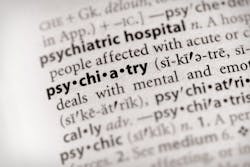Richard Plotts, the man who allegedly murdered a 53-year old caseworker at a suburban Philadelphia hospital last week by shooting her in the face, was formally charged with murder on Saturday following surgery to remove bullets in his torso.
According to Delaware County District Attorney Jack Whelan, police in Upper Darby, Pa., where Plotts lived, were aware of at least three mental health commitments, including once after he cut his wrists and once when he threatened suicide — but said such stays can last just one to three days. Whelan also noted in his press conference that Plotts had also spent time in a mental health facility.
Every week brings a new story in the media about murder-suicides, patients killing healthcare workers, random shootings and assaults. We can read the new polls like the article on U.S. shootings in healthcare, as well as the recent healthcare crime study by the International Association of Healthcare Security and Safety (IAHSS) that routinely shows that violence in healthcare is soaring.
Not only in healthcare, but throughout the U.S., these random active shooter trends are increasing. To see how much of this violence is related to severe mental health problems, we only have to look as far as these high profile incidents:
- June 14, 2012 - Buffalo, N.Y., trauma surgeon shooting
- July 20, 2012 - Aurora, Colo., movie theater shooting
- Sept. 16, 2013 - Washington Navy Yard shooting
- Dec. 17, 2013 – Reno, Nev. urology clinic shooting
- Jan. 22, 2014 - LAX active shooter incident
- April 2, 2014 - Fort Hood (2nd) active shooter incident
None of these incidents were related to poor performance review, losing a job, and only one of these could be called “domestic violence,” but what they all have in common is that the perpetrators were all severely mentally ill.
Guns scare me. Guns kill people by accident and on purpose. I never let my children play with guns. However, as I analyze the elements of these shootings and dozens more, my bias is changing. I think it’s less about guns and more about mental illness.
Healthcare and hospitals would be the one industry where you would think that people would be concerned about the state of mental health of their patients and staff. Instead, it seems like mental health problems are walled off by society, treated ineffectively, and violent tendencies (which sometimes make their way onto patients’ Facebook pages) are largely ignored and unreported by the clinicians treating them.
So it’s left to the security and law enforcement community to deal with these individuals who are paranoid, depressed, angry, frustrated, disappointed, hurt, confused, and, ultimately, violent.
Now that mental health has been re-classified as another medical problem, the money is flowing to the treatment centers and it’s covered by Medicare. But progress doesn’t seem to be either easy or effective.
Dr. Graham C.L. Davey, Ph.D. writing in Psychology Today in January said: “Many of those health professionals (GPs and family physicians) at the first point of contact with people suffering mental health problems are poorly trained to identify psychological problems in their patients, and have little time available to devote to dealing with these types of problems. This increasingly makes medication prescription an attractive option for doctors whose time-per-patient is limited—an outcome which will have all the potential negative effects of medicalizing the problem into a "disease."
And that’s exactly what we see, patients who don’t take their meds because of the negative side effects and so they become isolated and increasingly violent. The side effects are clearly pointed out in TV commercials, that you’ve probably watch. For example, one medicine has side effects that include sexual side effects, convulsions, brain shrinkage, stroke, death, violent thoughts, psychosis and delusional thinking.
The increase in hospitals adding seclusion rooms, expanding the number of beds for psych patients, and the time spent by both law enforcement and security professionals in dealing with these troubled individuals, may account for one-quarter to one-third of an organization’s security budget.
Many of the security risk assessments we do are focused on handling mobile mental patients, including the baby boomers suffering from Alzheimer’s and dementia.
As violent incidents continue to increase in our society, our workplaces, and in our hospitals, we need to spend more time looking and demanding treatments that work and that are sustainable by the patients so they can lead happier lives and we can protect the rest of society from their potentially violent behavior.



